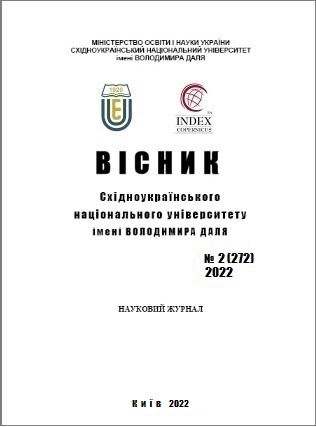Photoemission from different facets of single crystals gallium arsenide
DOI:
https://doi.org/10.33216/1998-7927-2022-272-2-99-105Keywords:
single-crystal facets, photoemission, quantum excitation, photoelectronics substitution for energy, output robot, zone dip, electronic sporidness, conductorsAbstract
It is known that sometimes branches of science experience periods of rapid development due to the emergence of qualitatively new ideas, analytical instruments for obtaining experimental results, as well as improvements in measurement methods. A vivid example of this is optical spectroscopy, which has changed significantly with the advent of laser light sources. Along with the intensive development of classical trends in science, new methods and applications arose. Among the new directions, a special place is occupied by the statistical and spectral analysis of light fields with the help of photodetectors - optical displacement spectroscopy. Experimental methods of optical displacement spectroscopy, in particular, studies of the statistics of photocounts, caused certain requirements for experimenters to efficient photodetectors. In this paper, methods and methods for obtaining such photodetectors and the dependence of the operation of such photodetectors on the orientation of the faces of the surface of a single crystal are considered. A3B5 semiconductor compounds in the future are the most promising for further detailed consideration. In this regard, gallium arsenide is a semiconductor compound formed by elements of groups III and V of the periodic system - gallium Ga and arsenic As. Gallium arsenide is the closest binary analog of germanium. By introducing appropriate impurities, gallium arsenide can be obtained with both n-type and p-type conductivity with different current carrier concentrations. This structure belongs to the crystallographic class of the cubic system. Gallium arsenide crystallizes in the zinc blende structure. The chemical bond in gallium arsenide is covalent with some degree of ionicity. Due to the presence of an ionicity fraction, gallium arsenide crystals split only along the plane (110). The center of symmetry is missing. The absence of a center of symmetry leads to the fact that polar axes appear in the directions in gallium arsenide. From all of the above, there is a great interest in studying the energy structure of a single crystal of gallium arsenide from different faces, and this semiconductor, as the material chosen for research, is one of the promising semiconductor crystals in micro- and nanoetrotronics, as it is used in the production of cold cathodes, cathodes with a negative electronic affinity, infrared receivers of electromagnetic radiation.
References
1. Борбавт А.М., Горбань И.С., Охрименко Б.А. и др. Оптические измерения. К.: Техніка. 1997, с. 419.
2. Eden R.C., Mool J.L., Spscer W.E. Photomission from GaAs of p-type at adsorption cesium and oxygen. Phy7s. Rev. Lett. 1967, 18, p. 597 – 604
3. Кулышев А.М., Черникова И.Д., Черников Н.Г. Влияние состояния поверхности полупроводников на работу фотодетекторов. Вісник СНУ ім. В. Даля, 2016. №2(226). С. 112–123.
4. White J.G., Roth W.C. Reculiarities of chemical etching of the GaAs surface. J. Appl. Phys., 30. 1959, p. 946 –948.
5. Chernicov N.G., Arsenjeva-Geil A.N. Effect of Cjnditions at the Surface on the size of the Surface spacecharge laver in Gallium Arsenide. Sov. Phys. Solid State, 1975. p. 2091–2094.
6. Кесаманлы Ф.П., Наследов Д.Н. Арсенид галлия. Наука. 12973, с.289.
7. Музер Ф., Пирсон В.Б. Полупроводниковые pseudopo-tential вещества (вопросы химической связи). Иностранная литература. М.: 1960, с. 425.
8. Черников Н.Г., Арсеньева-Гейль А.Н. Влияние условий на поверхности на величину приповерхностного объемного заряда в арсениде галлия. Физика твердого тела, том 16, выпуск 11. 1974, с.3388–3390.
9. Bergstresser T.K., Cohen M.L.Calculation of area structure of GaAs by the method of. Phys.Rev. 1966, 141, p. 789–798.
10. Кулышев А.М., Черникова И.Д., Черников Н.Г. Нанометрический корпускулярный фотоэжлектронный спектрометр. Вісник СНУ ім. В. Даля.2015, №5(222). С. 40 – 45
11. Mac Rae A.U., Bull C.W. Vetering thermioinic work function of the p-rype single crystal GaAs by Kerlvin. Amer, Phya. Sec., 2005, 10. p. 168 – 173.
12. Люзе Л.Л., Духанина Р.Я. Работа выхода граней А и В поверхности арсенида галлия. Физика твердого тела, том 41, выпуск 7. 2000. С. 2096 – 2101.

